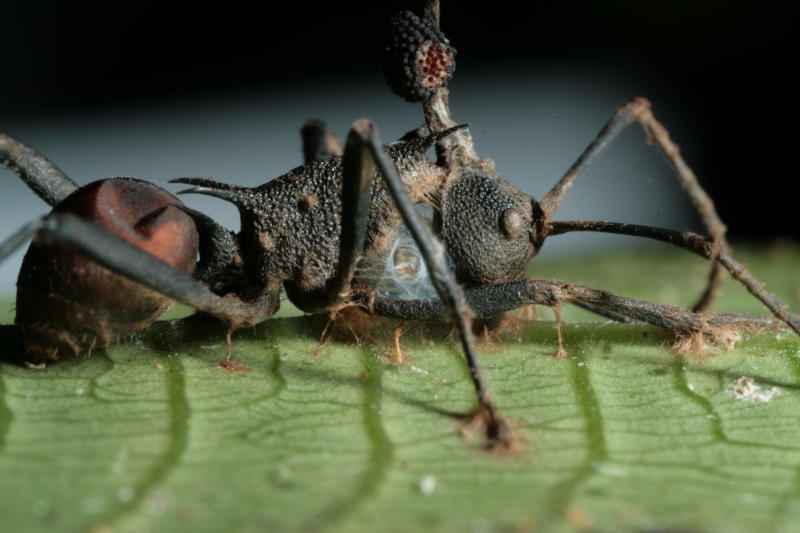Please note: Osher Rainforest will be closed for maintenance Jan. 14–16.
Science News
Fungus Eat Fungus World
May 8, 2012

In wild rainforests of the world, it’s a fungus-eat-fungus world.
You might remember the gruesome tale we posted last year about newly-discovered fungi species that zombify ants.
But nature has a way of dealing with such evil, or at least that’s what a team of researchers reports in the recent edition of PLoS ONE.
The deadly fungus, from the genus Ophiocordyceps, invades an ant’s brain and causes it to march to its death at a mass grave near the ant colony, where the fungus spores erupt out of the ant’s head, hoping to catch other innocent ants.
But the new study finds that the fungus isn’t as successful as one might think. Only about 6.5 percent of the spore-producing organs of the zombie-ant fungus are viable.
So what’s going on? Another fungus is attacking the Ophiocordyceps fungus. A fungus that lead researcher, David Hughes of Penn State, calls hyperparasitic. “The hyperparasitic fungus effectively castrates the zombie-ant fungus so it cannot spread its spores.” And this is good news for the ants. “Because the hyperparasitic fungi prevents the infected zombie-ant fungus from spreading spores, fewer of the ants will become zombies.”
(You can just imagine ants cheering here.)
Hughes is pretty excited, too. “Our research indicates that the danger to the ant colony is much smaller than the high density of zombie-ant cadavers in the graveyard might suggest. This complex interaction between ant colonies, their brain-manipulating parasites and other fungi capable of lending assistance to the colony underscores the need to study social insects under natural conditions.” Call it job security—Hughes and team are now expanding their efforts and “remain focused on following the exciting theatre played out on the rainforest floor.”
Image: David Hughes, Penn State University